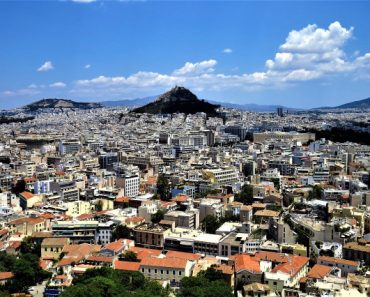Greece’s Roma community is primarily a young population group, with a significant proportion living in housing that does not meet basic health standards and surviving either by taking occasional day jobs or through state benefits. The vast majority have little to no formal education and lack specialized skills – factors that, combined with the stereotypes attached to them, make it difficult to access the labor market and improve their social and economic standing.
Nevertheless, the community’s social characteristics are evolving, albeit slowly, according to a report by the Social Cohesion Ministry’s General Secretariat for Social Solidarity and Combating Poverty completed in June with European Union funding and presented by Kathimerini.
According to the report, it is estimated that 116,090 Roma live in Greece, across 38,529 families, representing 1.11% of the country’s permanent population. They are spread across 142 municipalities nationwide, with the largest numbers found in Eastern Macedonia and Thrace, Attica, Thessaly, Western Greece and Central Macedonia.
The largest segment of the population, 52,983 people, live in settlements where permanent houses stand alongside makeshift structures, prefabricated units, or trailers. About 30,000 reside in standard houses or apartments, mostly in degraded neighborhoods within urban areas. According to the survey, 13,786 Roma live dispersed within cities and are fully integrated into local communities. However, around 20,000 people continue to live in extremely adverse conditions in encampments consisting of tents, improvised huts, or shacks.
The Roma population is also very young, with 47.4% between the ages of 20 and 39. Nearly one in five, or 19.8%, are between 20 and 29 years old. Only 26.1% are between 40 and 69, while just 3.1% are over 70, compared with 16.8% in the general population. Strikingly, only 0.6% of Roma are over 80, whereas the figure for the general population is 7.3%.
Having children is deeply rooted in the Romani culture, regardless of the perceived ability to support a large family, with parents, grandparents and other relatives often providing an essential support system. Indeed, more than 50% of the population belongs to large families with three or more children; a mere 5% have one child and 12% have two.
As the researchers note, “there are significant differences between Roma children and the general population. Specifically, according to the survey data, Roma children up to 18 years old make up 36.1% of the population, while, based on the 2021 census by the Hellenic Statistical Authority, children up to 19 years old in the general population account for 18.6%.”
Living conditions
More than half (54%) of the survey’s respondents say they live in their own dwelling, even if it is makeshift accommodation without electricity or basic sanitation facilities, while 32% report living in housing provided to them. The researchers note that just 11% of respondents in the survey, which was carried out via questionnaires and interviews, live as tenants, “possibly because the lack of a steady income denies them access to rented property, as landlords are reluctant to accept them.” Some 3%, meanwhile, live in shacks or squats.
Contrary to prevalent stereotypes, Greece’s Romani community is not nomadic. In fact, 76% of respondents say they have lived in the same place for more than six years and have chosen to do so because it is also where members of their close or extended family live.
Regardless of the size of their families – which are usually quite big – 46% of respondents live in a house with two rooms and 24% share one, a situation that researchers say may have repercussions on the ability to meet individual family members’ needs, such as those of children with schoolwork.
In the meantime, only two in 10 have access to a safe and constant power supply and two in 10 have no access to electricity at all. And even though 68% of respondents have a flushing toilet in their dwelling, 22% of Romani households do not have access to basic sanitation facilities, such as a toilet or a shower. A working sink is a luxury available to just 34% of respondents.
Researchers note that access to a facility like a shower and a toilet is not just important in terms of health and sanitation, but also affects how members of the community are regarded at work, school and society at large.
With regard to communication and technology, 98% of respondents have a cellphone, but juts over half (51%) do not have internet access, while 90% of families have a television and just 24% a computer.
Paid work, which is rarely consistent and reliable, constitutes the main source of income for 51% of Greece’s Roma, while 45% subsist on state subsidies and support. The jobs in which Roma are typically employed are precarious, low-skilled and usually undocumented.
Marriage & education
Married life for some Roma girls can begin as early as 11, though the average age for marriage is 17, when many also have their first child. Some Roma boys marry at the age of 13, though the more typical age is 19.
In terms of education, a significant 14% of the population cannot read or write. Just 4% have a high-school diploma and 1% have attended university. Researchers say that school dropout rates have decreased significantly in recent years, especially after benefits were linked to a family’s children attending school. Nevertheless, 17% of Roma children do not attend school regularly.





